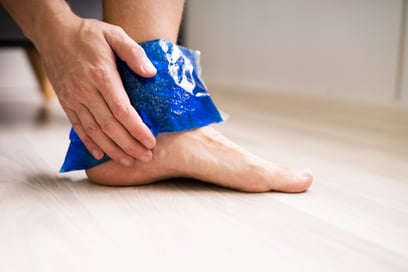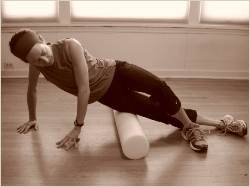 One of the biggest questions people have when experiencing and ache or pain is “do I use heat or ice to help eliminate my pain?” Ice and heating pads are among the most common treatments for pain, but are you using them correctly? If done wrong, using ice or heat may do more harm than good.
One of the biggest questions people have when experiencing and ache or pain is “do I use heat or ice to help eliminate my pain?” Ice and heating pads are among the most common treatments for pain, but are you using them correctly? If done wrong, using ice or heat may do more harm than good.
When to use Ice
Ice is most commonly used for acute recent injuries (within the last 72 hours) where swelling is the issue. Applying an ice pack like ice cubes in a plastic bag or a bag of frozen peas to the injured site can help minimize the swelling, relax the muscles, and reduce bleeding into the tissues to help manage pain. Ice can also be used for conditions like overuse injuries. In this instance, using ice after activity can help control inflammation. Some conditions on when ice is the best to use are:
- Sprains
- After new injuries
- Swelling
- Bruising
- Pulled muscles
- Gout
When to use Heat
Heat is best used for chronic conditions to help relax and loosen tissues and stimulate blood flow to the affected area. Heat is helpful in improving range of motion in a stiff joint. Don’t use heat right after exercise, an acute injury, or when swelling is involved. Heating the affected area can be accomplished with a heating pad, or a hot wet towel. Some conditions on when heat is the best to use are:
- Arthritis
- Muscle aches
- Chronic back or knee pain
- Sciatica pain
- Joint and muscle stiffness
- Fibromyalgia
Safety Tips
- Never apply the ice or heat source directly to skin. Wrap the source in a towel or an article of clothing can be worn.
- Do not treat ice or heat for longer than 20 minutes at a time.
- When using ice, check the skin frequently. If the skin becomes bright pink or red, stop immediately.
- Never use heat if there’s swelling or bruising, or if you have poor circulation or no feeling in the affected body part.


.jpg?width=389&name=GettyImages-974640830%20(1).jpg) Many of us suddenly have been thrust into working from home. I am sitting on a folding chair, leaning over my keyboard, looking at my laptop screen that is sitting on a folding table. Needless to say, I am not in an ergonomically sound position. The Mayo Clinic has a great blog about
Many of us suddenly have been thrust into working from home. I am sitting on a folding chair, leaning over my keyboard, looking at my laptop screen that is sitting on a folding table. Needless to say, I am not in an ergonomically sound position. The Mayo Clinic has a great blog about  Joint pain is a very common problem, and keeping fit is one of the best ways to find reliable relief. For many of us, limiting activity might seem to make sense when a joint is achy. However, inactivity can make matters worse. In fact, inactivity is a leading cause of joint pain, causing weakness in muscles and bones that can lead to injuries and joint disorders like osteoarthritis.
Joint pain is a very common problem, and keeping fit is one of the best ways to find reliable relief. For many of us, limiting activity might seem to make sense when a joint is achy. However, inactivity can make matters worse. In fact, inactivity is a leading cause of joint pain, causing weakness in muscles and bones that can lead to injuries and joint disorders like osteoarthritis. You may have seen foam rollers in your corporate fitness center and wondered what to do with them or how they benefit the body. Using a foam roller involves a technique called self-myofascial release. The idea is that when deep pressure is applied to areas that have been overworked or carry tightness, the soft tissue tension is released, allowing for better flexibility, improved performance, and decreased pain.
You may have seen foam rollers in your corporate fitness center and wondered what to do with them or how they benefit the body. Using a foam roller involves a technique called self-myofascial release. The idea is that when deep pressure is applied to areas that have been overworked or carry tightness, the soft tissue tension is released, allowing for better flexibility, improved performance, and decreased pain. Your joints play an important role in all of life’s activities. They connect bone to bone, which allows your body to move during everything from sports and exercise to everyday functions such as playing with kids, lifting groceries, performing yard work, and even sitting at a desk.
Your joints play an important role in all of life’s activities. They connect bone to bone, which allows your body to move during everything from sports and exercise to everyday functions such as playing with kids, lifting groceries, performing yard work, and even sitting at a desk. Having a desk job likely means you spend more than half of your day—half of your whole day, not just your workday—NOT moving. We all know physical activity has a positive impact on health, but the ill-effects of inactivity are often overlooked.
Having a desk job likely means you spend more than half of your day—half of your whole day, not just your workday—NOT moving. We all know physical activity has a positive impact on health, but the ill-effects of inactivity are often overlooked.